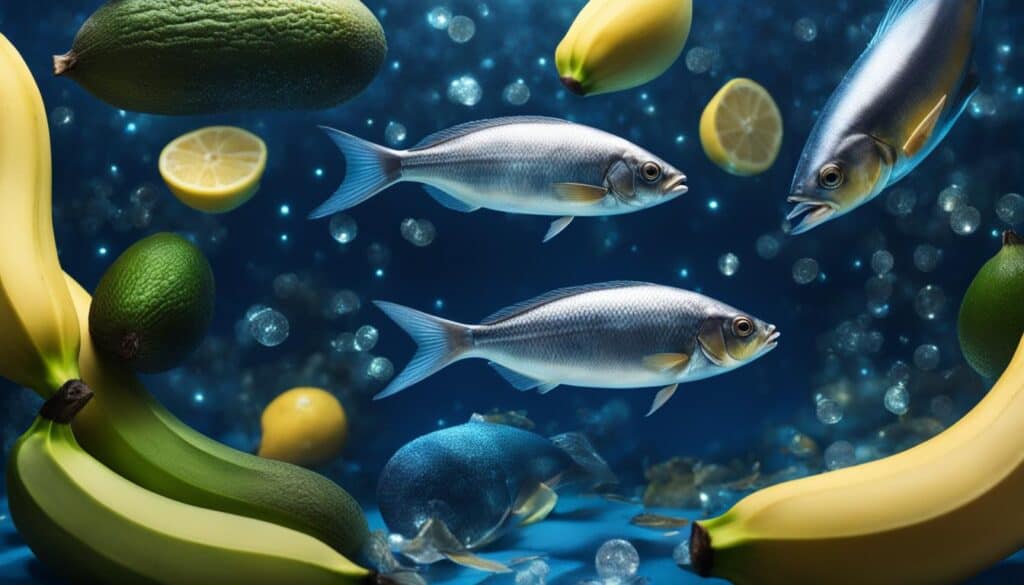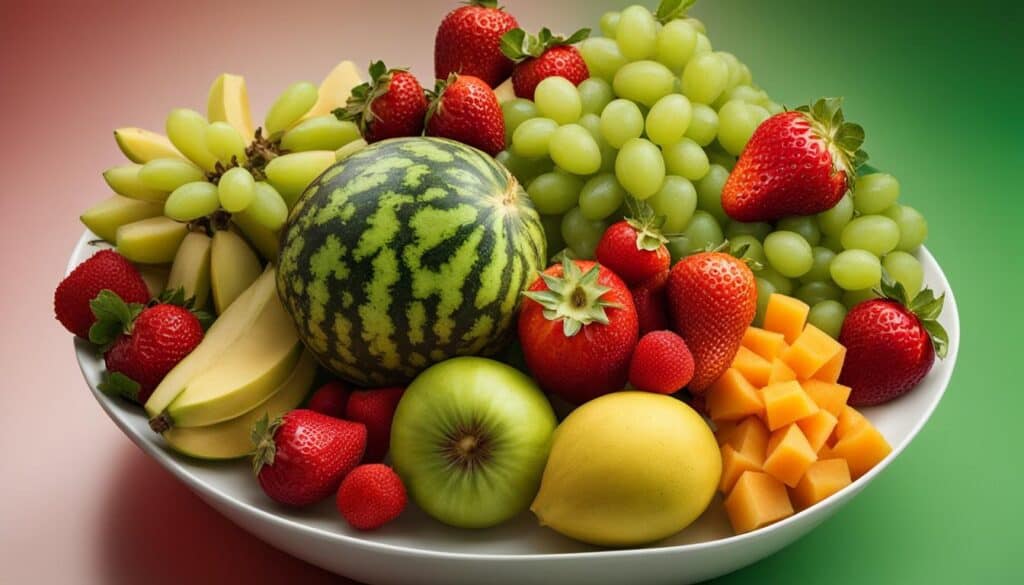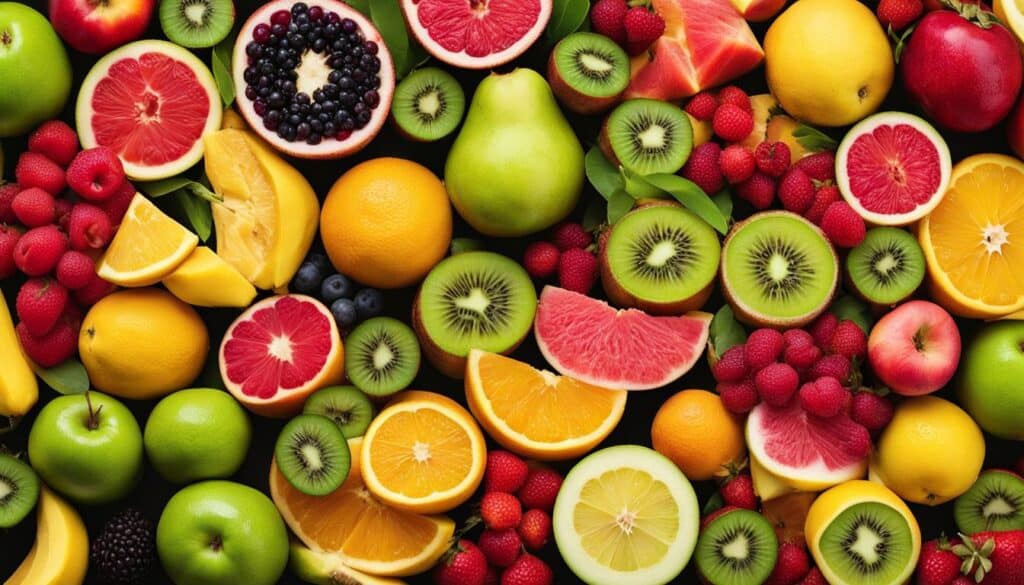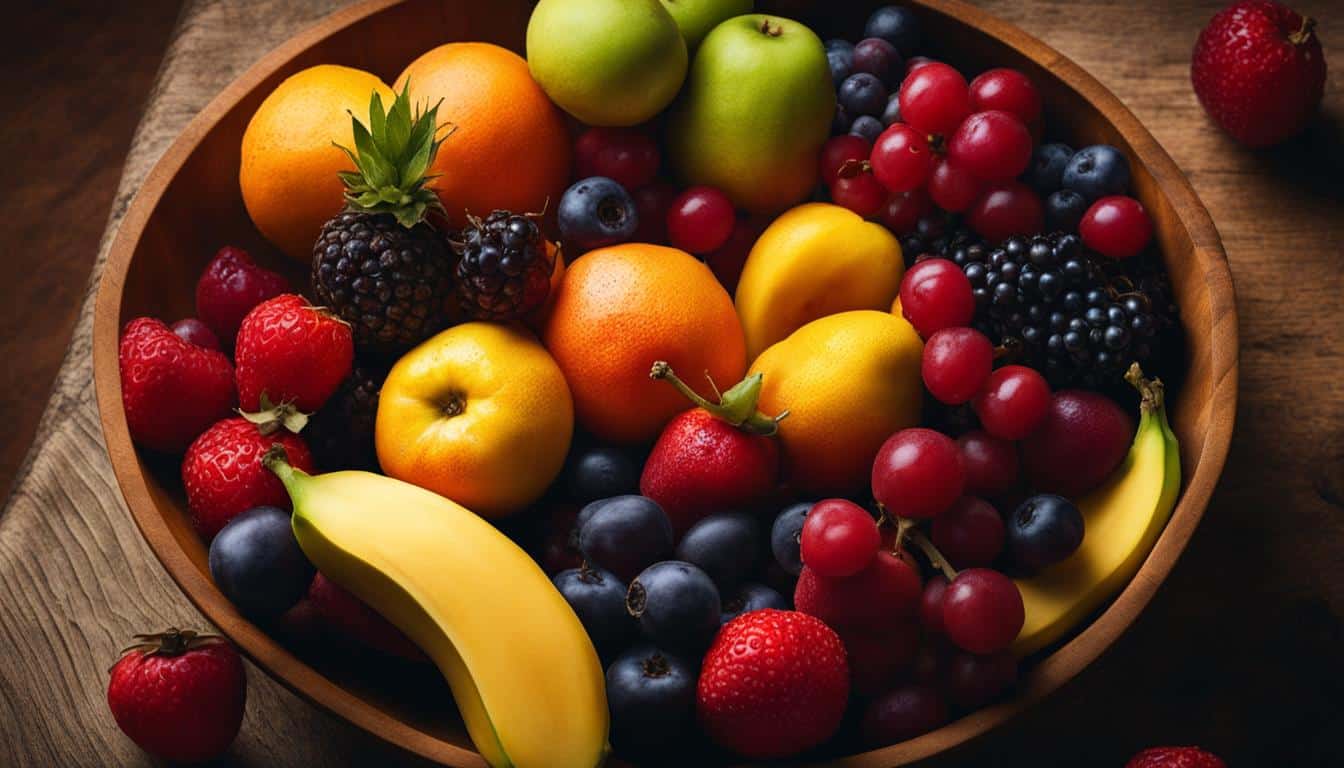Many fresh fruits and vegetables are rich in potassium, making them essential for maintaining a healthy diet. Bananas, oranges, cantaloupe, honeydew, apricots, grapefruit, and dried fruits such as prunes, raisins, and dates are all high in potassium. Other potassium-rich fruits include cooked spinach, cooked broccoli, potatoes, sweet potatoes, mushrooms, peas, cucumbers, zucchini, pumpkins, leafy greens, orange juice, tomato juice, prune juice, apricot juice, and grapefruit juice. Certain dairy products like milk and yogurt are also excellent sources of potassium, as are some fish like tuna, halibut, cod, trout, and rockfish.
Beans such as lima beans, pinto beans, kidney beans, soybeans, and lentils are high in potassium as well. Additional foods rich in potassium include salt substitutes, molasses, nuts, meat and poultry, brown and wild rice, bran cereal, and whole-wheat bread and pasta. It’s important to note that women should aim for 2,600mg of potassium per day, while men should aim for 3,400mg. Most Americans do not meet this goal, so increasing the consumption of high-potassium fruits and other foods is essential for a healthy lifestyle.
Key Takeaways:
- Include potassium-rich fruits like bananas, oranges, and apricots in your daily diet.
- Cooked vegetables such as spinach and broccoli are excellent sources of potassium.
- Enjoy the potassium benefits of dairy products like milk and yogurt.
- Include high-potassium fish like tuna and trout in your meals.
- Beans, such as kidney beans and lentils, are a great source of potassium.
Before consuming high-potassium fruits or any supplements, it is essential to consult with a healthcare professional to ensure their safety and appropriateness for your health needs.
The Importance of Potassium in Your Diet
Potassium is a crucial mineral that plays a vital role in maintaining health. Alongside calcium and sodium, potassium helps regulate bodily functions and supports optimal well-being. Consuming enough potassium is especially important for maintaining healthy blood pressure, promoting good muscle health, and ensuring proper nerve function. Potassium also helps relax the walls of blood vessels, which can help lower blood pressure and reduce the risk of heart problems. By incorporating high-potassium fruits into your diet, you can reap the benefits of this essential mineral and support your overall health.
In addition to its role in blood pressure regulation, potassium is also essential for proper muscle function. It helps muscles contract and relax, making it crucial for maintaining healthy muscle tone and preventing muscle cramps. Potassium is also necessary for nerve impulse transmission, ensuring that signals are properly sent and received throughout the body. Without sufficient potassium, nerve function can be compromised, leading to issues such as muscle weakness or tingling sensations.
Incorporating high-potassium fruits into your diet is an effective way to increase your potassium intake. Fruits such as bananas, oranges, cantaloupe, and dried fruits like prunes, raisins, and dates are all excellent sources of this essential mineral. By enjoying these delicious fruits, you can support your overall health and ensure that you are meeting your recommended daily potassium intake.
Top High-Potassium Fruits You Should Add to Your Diet
When it comes to incorporating high-potassium fruits into your diet, there are numerous options to choose from. These fruits not only provide a delicious and refreshing addition to your meals and snacks but also contribute to your overall potassium intake. Here are some of the top high-potassium fruits you should consider adding to your diet:
- Bananas: Known for their potassium content, bananas are a classic choice for boosting your potassium levels.
- Oranges: Oranges are not only a great source of vitamin C but also contain a significant amount of potassium.
- Cantaloupe: This juicy fruit is packed with potassium and also offers hydration benefits.
- Honeydew: Another delicious melon variety, honeydew, is rich in potassium and provides a sweet and refreshing taste.
- Grapefruit: Grapefruits are not only tangy and flavorful but also high in potassium, making them a healthy choice.
By including these high-potassium fruits in your diet, you can enjoy a variety of flavors while increasing your potassium intake and supporting your overall well-being. Whether enjoyed on their own or incorporated into recipes and dishes, these fruits offer a nutritious and tasty way to meet your daily potassium needs.
The Potassium Power of Cooked Veggies
When it comes to increasing your potassium intake, don’t forget about cooked vegetables. Not only do they provide a host of other nutrients, but they also pack a punch when it comes to potassium content. Incorporating these potassium-rich veggies into your meals is an easy and delicious way to support your overall health.
One standout vegetable in terms of potassium is spinach. A serving of cooked spinach contains approximately 840mg of potassium, making it an excellent choice for boosting your intake. Broccoli is another vegetable that shouldn’t be overlooked. With around 460mg of potassium per serving, it’s a tasty addition to stir-fries, salads, and side dishes.
Potatoes and sweet potatoes are also powerhouse vegetables when it comes to potassium. A medium-sized baked potato contains around 900mg of potassium, while a similar-sized sweet potato provides approximately 450mg. These versatile vegetables can be enjoyed in a variety of ways, from mashed and roasted to baked and stuffed.
To give you a better idea of the potassium content in different cooked veggies, take a look at the table below:
| Veggies | Potassium Content (per serving) |
|---|---|
| Spinach (cooked) | 840mg |
| Broccoli (cooked) | 460mg |
| Potato (baked, medium-sized) | 900mg |
| Sweet Potato (baked, medium-sized) | 450mg |
| Mushroom (cooked) | 220mg |
| Peas (cooked) | 240mg |
| Cucumbers (cooked) | 150mg |
| Zucchini (cooked) | 200mg |
| Pumpkin (cooked) | 220mg |
By including these cooked vegetables in your meals, you can easily increase your potassium intake and enjoy a wide range of flavors and textures. Experiment with different recipes and cooking methods to find your favorite ways to incorporate these potassium-rich veggies into your diet.
Juice Your Way to Potassium-Rich Refreshment

When it comes to increasing your potassium intake, don’t overlook the power of juices made from high-potassium fruits. These refreshing beverages not only provide essential hydration but also offer a convenient and delicious way to boost your potassium levels. Whether you prefer the tanginess of orange juice or the tartness of grapefruit juice, there are plenty of options to choose from that are packed with potassium.
If you’re looking for a citrusy punch of potassium, orange juice and grapefruit juice are excellent choices. Both of these juices offer a refreshing and tangy flavor while providing a significant amount of potassium per serving. Enjoy a glass of orange juice with your breakfast or sip on some grapefruit juice as a midday pick-me-up.
Prune juice and apricot juice are also great options for increasing your potassium intake. These delicious juices not only offer a subtly sweet flavor but also provide a generous dose of potassium. Enjoy a glass of prune juice in the morning or incorporate apricot juice into your favorite smoothie recipe for a potassium-rich boost.
Remember, when choosing juices, it’s important to opt for 100% pure juice without any added sugars. This ensures that you’re getting the full nutritional benefits of the fruits without any unnecessary additives. So, why not add a glass of potassium-rich juice to your daily routine and give your body the nourishment it deserves?
Dairy Goodness: Potassium in Milk and Yogurt
In addition to being excellent sources of calcium, milk and yogurt also provide important amounts of potassium. Incorporating these dairy products into your diet is a simple and delicious way to increase your potassium intake and support overall health and wellness.
Milk is a versatile beverage that can be enjoyed on its own, added to cereal, or used as an ingredient in various recipes. Whether you prefer whole milk, low-fat, or fat-free options, you can still benefit from the potassium content. A cup of milk typically contains around 350mg of potassium, making it a significant contributor to your daily potassium needs.
Yogurt is another potassium-rich dairy option that offers additional health benefits. It contains beneficial probiotics, which can support gut health and digestion. A serving of yogurt, depending on the brand and flavor, can provide between 250-450mg of potassium. Opting for plain or Greek yogurt without added sugars is recommended to maximize the nutritional benefits and avoid excessive sugar intake.
| Dairy Product | Potassium Content (per serving) |
|---|---|
| Milk | Around 350mg |
| Yogurt | 250-450mg |
When selecting dairy products, it’s important to be mindful of your overall dietary needs and preferences. If you have specific concerns about lactose intolerance or are following a vegan diet, there are a variety of non-dairy alternatives available, such as almond milk or soy yogurt, that may also provide potassium. Consulting with a healthcare professional or registered dietitian can help you make informed decisions about incorporating dairy or dairy alternatives into your diet while ensuring you meet your potassium requirements.
Fish and Potassium: A Powerful Combination

When it comes to boosting your potassium intake, don’t forget about the power of fish. Certain varieties of fish are not only delicious but also high in potassium. Including these fish in your diet can help you meet your daily potassium needs and support your overall health and wellness.
Some of the best fish options for potassium include tuna, halibut, cod, trout, and rockfish. These fish varieties provide significant amounts of potassium per serving, making them an excellent addition to a potassium-rich diet.
Whether you enjoy fish grilled, baked, or poached, incorporating these potassium-packed options into your meals adds variety and flavor to your diet. Plus, with their high potassium content, they provide essential nutrients that support good muscle health, promote healthy blood pressure, and ensure proper nerve function.
Table: Potassium Content in Fish
| Fish Variety | Potassium Content (per 100g) |
|---|---|
| Tuna | 358mg |
| Halibut | 429mg |
| Cod | 439mg |
| Trout | 451mg |
| Rockfish | 377mg |
By incorporating these potassium-rich fish into your diet, you can enjoy a range of health benefits while indulging in delicious meals. Whether you’re a seafood lover or looking to diversify your protein sources, don’t underestimate the power of fish in boosting your potassium intake.
The Power of Beans for Potassium Intake
When it comes to boosting your potassium intake, beans are a versatile and nutrient-rich option. Not only are they an excellent source of protein, but they also pack a powerful punch of potassium. Incorporating beans into your diet is an easy and delicious way to increase your potassium levels while enjoying a variety of flavors and textures.
There are several types of beans that are high in potassium. Lima beans, pinto beans, kidney beans, soybeans, and lentils are all great choices. These beans can be added to soups, stews, salads, and side dishes, offering a convenient way to boost your potassium intake.
In addition to being rich in potassium, beans are also a good source of fiber and other essential nutrients. They can help support digestive health, promote satiety, and contribute to overall well-being. Whether you’re a vegetarian, vegan, or simply looking to incorporate more plant-based foods into your diet, beans are a fantastic option that should not be overlooked.
So the next time you’re planning your meals, remember to include beans as part of your potassium-rich diet. With their nutritional benefits and delicious taste, they are a powerhouse food that can contribute to your overall health and wellness.
| Bean Variety | Potassium Content (per 1 cup serving) |
|---|---|
| Lima Beans | 955mg |
| Pinto Beans | 746mg |
| Kidney Beans | 713mg |
| Soybeans | 676mg |
| Lentils | 731mg |
Table: Potassium Content in Different Types of Beans. Source: USDA National Nutrient Database for Standard Reference.
Other Potassium-Rich Foods to Consider

In addition to the high-potassium fruits mentioned earlier, there are several other foods that can help boost your potassium intake and contribute to a healthy lifestyle. Let’s take a look at some of these options:
Salt Substitutes
For those looking to reduce their sodium intake, salt substitutes can be a great alternative. These products often contain potassium chloride instead of sodium chloride, providing a flavorful way to add potassium to your meals.
Molasses
Molasses, a thick, dark syrup derived from sugar cane or sugar beets, is not only a delicious sweetener but also a good source of potassium. Adding a drizzle of molasses to your dishes or using it as a natural sweetener can help increase your potassium intake.
Nuts
Nuts, such as almonds, pistachios, and cashews, offer a variety of health benefits, including being a rich source of potassium. Snacking on a handful of nuts throughout the day is not only satisfying but also a great way to boost your potassium levels.
Meat and Poultry
Meat and poultry, such as beef, pork, chicken, and turkey, are all excellent sources of potassium. Including lean cuts of these proteins in your meals can help meet your potassium needs while providing essential nutrients.
Brown and Wild Rice
Switching from white rice to brown or wild rice is another way to increase your potassium intake. These whole grain options not only offer more fiber but also provide a good amount of potassium.
Bran Cereal
Starting your day with a bowl of bran cereal can be a nutritious way to boost your potassium levels. Bran cereals are often fortified with vitamins and minerals, including potassium, making them a great choice for a potassium-rich breakfast.
Whole-Wheat Bread and Pasta
Choosing whole-wheat bread and pasta over their refined counterparts is a simple switch that can significantly increase your potassium intake. These whole grain options are not only higher in potassium but also offer more fiber and nutrients.
| Foods | Potassium Content (per serving) |
|---|---|
| Salt Substitutes | Varies, depending on the brand |
| Molasses | 498mg |
| Nuts (Almonds) | 200mg |
| Meat and Poultry (Chicken Breast) | 334mg |
| Brown Rice | 154mg |
| Bran Cereal | 315mg |
| Whole-Wheat Bread | 81mg |
| Whole-Wheat Pasta | 108mg |
By incorporating these potassium-rich foods into your meals and snacks, you can further enhance your potassium intake and support optimal health. Remember to consult with your healthcare provider or a registered dietitian for personalized recommendations based on your individual needs and any specific dietary considerations.
Meeting Your Daily Potassium Needs

When it comes to meeting your daily potassium needs, incorporating high-potassium fruits into your diet is a simple and effective strategy. Not only do these fruits provide a delicious and refreshing way to boost your potassium levels, but they also offer a variety of other health benefits. Some top fruits with potassium include bananas, oranges, cantaloupe, honeydew, and grapefruit. Dried fruits such as prunes, raisins, and dates are also excellent sources of this essential mineral.
Additionally, cooked vegetables like spinach and broccoli can contribute significantly to your daily potassium intake. Potatoes, sweet potatoes, and other vegetables like mushrooms, peas, cucumbers, and zucchini are also potassium powerhouses. By incorporating these cooked veggies into your meals, you can easily meet your daily potassium needs while enjoying the flavors and textures they offer.
To further increase your potassium intake, consider adding juices made from high-potassium fruits to your daily routine. Orange juice, tomato juice, apricot juice, and grapefruit juice are all excellent choices. These juices not only provide a refreshing and flavorful beverage option but also contribute to your overall potassium intake.
Table: Top High-Potassium Fruits
| Fruits | Potassium Content (mg per serving) |
|---|---|
| Bananas | 400 |
| Oranges | 240 |
| Cantaloupe | 430 |
| Honeydew | 470 |
| Grapefruit | 290 |
| Prunes (dried) | 530 |
| Raisins (dried) | 300 |
| Dates (dried) | 280 |
In conclusion, by incorporating high-potassium fruits, cooked vegetables, and juices into your diet, you can easily meet your daily potassium needs. Whether it’s enjoying a banana as a snack or adding spinach to your salad, there are plenty of delicious and nutritious options to choose from. Remember to consult with your healthcare provider or a registered dietitian for personalized recommendations based on your individual needs, and enjoy the benefits of a potassium-rich diet for overall health and wellness.
The Nutrition Facts Label and Potassium

In May 2016, new regulations were put in place requiring potassium to be listed on Nutrition Facts labels. This change makes it easier for individuals to track their potassium intake and make informed decisions about their food choices. Companies have until January 2020 to update their food labels to include potassium information.
As consumers, it’s important to keep an eye on the potassium content of the foods we consume. By understanding the potassium levels in different foods, we can maintain a well-balanced diet and meet our daily requirements. This is especially crucial for those who need to carefully monitor their potassium intake, such as individuals with kidney disease.
Tracking potassium on Nutrition Facts labels allows us to make conscious choices about the foods we eat. By selecting foods that are higher in potassium, we can ensure that we are getting enough of this essential mineral. Whether it’s choosing high-potassium fruits, vegetables, dairy products, or other potassium-rich foods, being mindful of our potassium intake contributes to overall health and wellness.
So, as you use Nutrition Facts labels to make informed decisions about your food choices, be sure to pay attention to the potassium content. By doing so, you can take steps towards meeting your recommended daily intake and maintaining a healthy lifestyle.
Table: Potassium Content in Common Foods
| Food | Potassium Content (mg) |
|---|---|
| Banana | 400 |
| Orange | 237 |
| Spinach | 558 |
| Yogurt (low-fat) | 380 |
| Tuna | 350 |
| Potato | 897 |
- It’s important to note that the potassium content in foods may vary depending on factors such as ripeness, cooking methods, and processing.
- Consulting with a healthcare provider or registered dietitian can provide personalized recommendations for your specific potassium needs.
Conclusion
Incorporating high-potassium fruits into my daily diet is a simple and effective way to support a healthy lifestyle. From bananas and oranges to cooked vegetables, juices, dairy products, and beans, there are plenty of delicious options to choose from. By increasing my potassium intake, I can promote healthy blood pressure, support muscle and nerve function, and enjoy the numerous benefits of this essential mineral.
Remember to consult with your healthcare provider or a registered dietitian for personalized recommendations based on your individual needs and any specific dietary considerations. They can provide guidance on the appropriate potassium intake for your specific situation. It’s important to meet and maintain the recommended daily potassium intake of 2,600mg for women and 3,400mg for men.
So let’s boost our health and enrich our diet with these delicious, potassium-packed fruits. By incorporating them into our meals and snacks, we can achieve a well-balanced diet and support our overall well-being. Whether it’s enjoying a banana as a snack, adding cooked spinach to a meal, or sipping on a glass of orange juice, every choice we make can contribute to a healthier lifestyle.
FAQ
What are some high-potassium fruits?
Some high-potassium fruits include bananas, oranges, cantaloupe, honeydew, apricots, grapefruit, and dried fruits such as prunes, raisins, and dates.
Which cooked vegetables are rich in potassium?
Cooked spinach, cooked broccoli, potatoes, sweet potatoes, mushrooms, peas, cucumbers, zucchini, and pumpkins are all rich in potassium.
Are juices a good source of potassium?
Yes, juices made from high-potassium fruits like orange juice, tomato juice, prune juice, apricot juice, and grapefruit juice are a good source of potassium.
Do dairy products contain potassium?
Yes, dairy products like milk and yogurt are not only a great source of calcium but also provide important amounts of potassium.
Which types of fish are high in potassium?
Tuna, halibut, cod, trout, and rockfish are all fish varieties that are high in potassium.
Are beans a good source of potassium?
Yes, beans such as lima beans, pinto beans, kidney beans, soybeans, and lentils are all high in potassium.
What other foods are rich in potassium?
Other foods rich in potassium include salt substitutes, molasses, nuts, meat and poultry, brown and wild rice, bran cereal, and whole-wheat bread and pasta.
How much potassium do I need per day?
Women should aim for 2,600mg of potassium per day, while men should aim for 3,400mg.
Why is potassium important in our diet?
Potassium plays a vital role in maintaining health, including regulating bodily functions, promoting good muscle health, ensuring proper nerve function, and supporting healthy blood pressure.
How can I meet my daily potassium needs?
By incorporating high-potassium fruits and other foods into your diet, you can meet your daily potassium needs. Consulting with a healthcare provider or registered dietitian can provide personalized recommendations.
Is potassium listed on Nutrition Facts labels?
Yes, potassium is a required listing on Nutrition Facts labels as of May 2016.





Leave a Reply